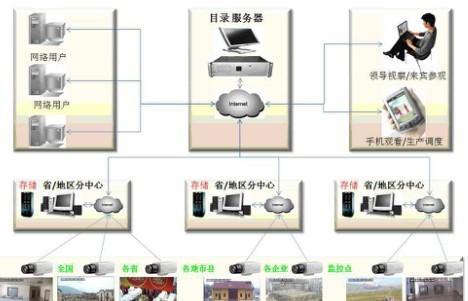The high resolution of network surveillance cameras has become a major support point for high-definition surveillance. So, in addition to the high-definition picture quality provided by network surveillance cameras, can it be supported on other "hardware" structures? Of course, network bandwidth becomes a key problem.
This article refers to the address: http://
Network surveillance cameras can process more data than ordinary HD surveillance cameras. When storing a large amount of video file information in the LAN, you must recognize the limitations of the current environment; if you want to transmit these files, You can use the network, of course, you will be able to transfer big data with low bandwidth, which is a good way to save money.
With the market of high-definition surveillance cameras becoming more popular, security engineers or system integrators are making full use of network resources to better manage the application of multi-point monitoring systems. It is undeniable that the lack of network bandwidth brings some trouble to the video surveillance system, but in the surveillance system, how can we avoid the technical bottlenecks brought by the following five key areas: video compression, image delay, selective transmission, distributed management and Management needs.
Video compression
The surveillance market has a lot of misunderstandings about video compression, and H.264 video coding is considered the best compression technique. For most people, H.264 is just a name for video compression, so that how it implements compression technology is what many people don't understand.
The important thing is that from the compression standards provided by different vendors and the tasks you have completed, you should understand what is genuine. High-quality image compression uses 1/2 of the bandwidth when transmitting video images. Poor compression techniques not only fail to provide high-quality images, but also take up all of your bandwidth. Good compression technology can provide high-definition images with high frame rates at low bandwidth.
Image delay
Another important consideration for image delay. From the monitoring command center or the monitoring big screen, if the monitoring system is afraid of images, if there is more than 1 second delay, then the back-end management personnel will have difficulty capturing the information that triggers the alarm person; if real-time video transmission can be achieved The administrator can quickly control the PTZ to find the suspect.
The optimal delay time of the surveillance camera from image capture to return to the video center should be less than 100ms. HD-SDI surveillance cameras can do this, but IPC's current optimal delay time has been between 200 and 300ms.


Different network surveillance cameras have different delays
Choose to send
This feature can be controlled in most DVRs or NVRs for selecting to send data. If it is mobile detection, it is better to say that it is part of intelligent monitoring. When the current monitoring does not trigger any event, the network at this time is in the "idle" state. Once a moving object passes, then the network is switched from "free" to "busy". The benefit of this is that the hard disk storage space is saved. Save network resources.
Distributed management
The significance of distributed management is that you don't need to "move" the surveillance camera and monitoring center data back and forth, just connect the network to the NVR and use broadband to transmit data between them.
For large surveillance systems, distributed network video management has an advantage. The monitoring point video server is connected to the Internet through broadband, and the collected video information is centralized on the central server, and the central server forwards the video to all levels of users, thereby realizing unified management of each point. Distributed network video management adopts distributed monitoring and centralized management, and relies on the Internet to realize digital and networked monitoring systems.

Distributed monitoring system application
Management needs
As the administrator of the monitoring system, you need to know what level of data the user can grasp. It is also based on a distributed monitoring system, and the central service platform can limit the information that each user can enjoy. Each enterprise user can only see his own video surveillance; users of different levels in the enterprise can only see video surveillance points under their own jurisdiction, and different levels of monitoring have different operational priorities.
For administrators of each branch point, they must learn how to use shared resources without taking up the main bandwidth resources. As an important trend in the future monitoring market, network monitoring, in addition to being able to fully utilize network resources, selects high frame rate cameras to actually collect important image information.
Phone Plug,Toolless Plug,Telephone Plug 4P4C,Rj45 Toolless Plug
Dongguan Fangbei Electronic Co.,Ltd , https://www.connectorfb.com